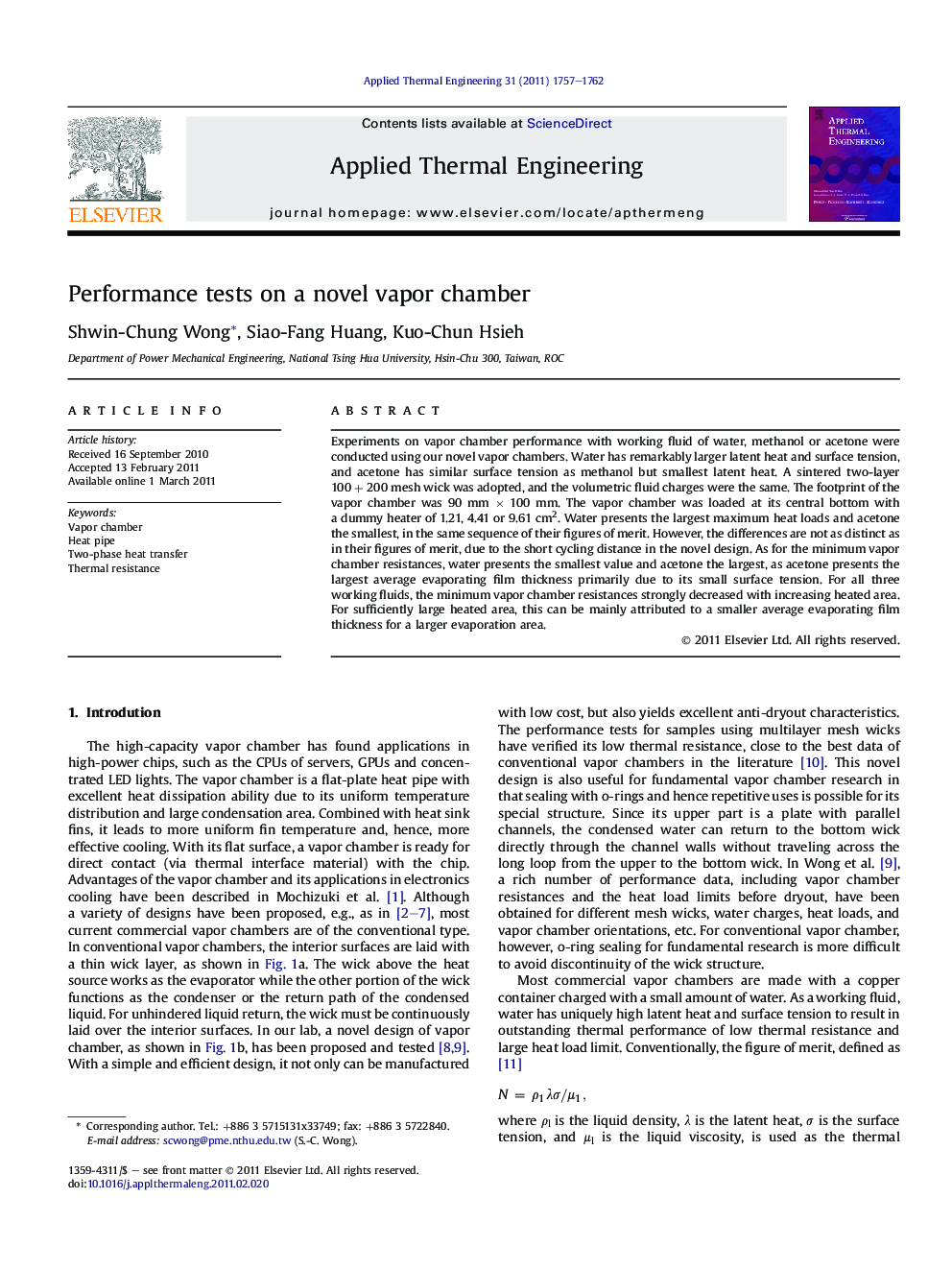| Article ID | Journal | Published Year | Pages | File Type |
|---|---|---|---|---|
| 648013 | Applied Thermal Engineering | 2011 | 6 Pages |
Experiments on vapor chamber performance with working fluid of water, methanol or acetone were conducted using our novel vapor chambers. Water has remarkably larger latent heat and surface tension, and acetone has similar surface tension as methanol but smallest latent heat. A sintered two-layer 100 + 200 mesh wick was adopted, and the volumetric fluid charges were the same. The footprint of the vapor chamber was 90 mm × 100 mm. The vapor chamber was loaded at its central bottom with a dummy heater of 1.21, 4.41 or 9.61 cm2. Water presents the largest maximum heat loads and acetone the smallest, in the same sequence of their figures of merit. However, the differences are not as distinct as in their figures of merit, due to the short cycling distance in the novel design. As for the minimum vapor chamber resistances, water presents the smallest value and acetone the largest, as acetone presents the largest average evaporating film thickness primarily due to its small surface tension. For all three working fluids, the minimum vapor chamber resistances strongly decreased with increasing heated area. For sufficiently large heated area, this can be mainly attributed to a smaller average evaporating film thickness for a larger evaporation area.
► Present novel VC design greatly reducing liquid flow resistance. ► Rvc and Qmax compared for water, methanol and acetone as VC working fluid. ► Augmented Qmax obtained for methanol and acetone using present novel VC. ► Reducing Rvc with larger evaporator explained with evaporating film thickness. ► Increasing Qmax with larger evaporator explained with evaporating film thickness.
